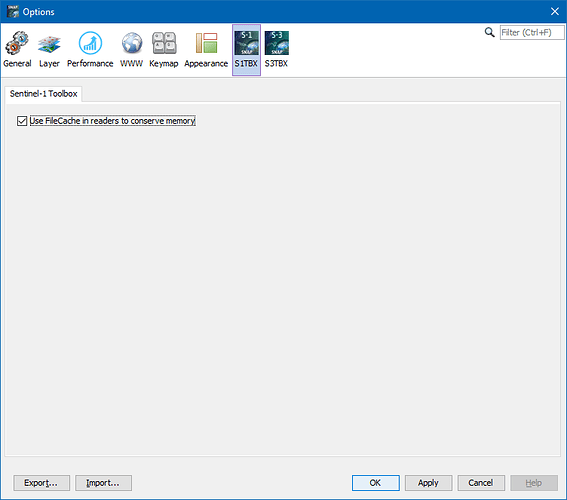Technical question, I am running snap Interferometric processing on 16 gb ram and i7 7700hq cpu. But it seams not enough because the enhanced spectral diversity on a single image pair took 54 to 79 minutes to complete which is bit too slow. Unfortunately they don’t provide a proper workstation at work so I am Picking up a desktop PC and would like to know which CPU brand AMD or Intel can function properly with the heavier tasking like establishing a complete flowchart. and How many gigabytes of memory does it require?
Thanks for your precious time!
Regarding system requirements, there is an entry in the FAQ:
Regarding your specific question. The brand is not that important, both can do the processing quite well.
In your case more RAM would be helpful, I guess.
I think you need to get the best you can afford for the task… usually desktop CPUs are faster than laptop ones (cooling is easier).
Take this comparasion. Benchmark issues aside. Your current CPU is a good example, it is slightly slower than the equivalent desktop version (from 4/5years ago). Current (last year) CPUs can be significantly faster and currently AMD has a slightly performance advantage.
Your other alternative may be to acquire cloud services or servers. This depends on how much you are willing to spend and how much you can afford.
I’d like to add that SSD:s are a must for high-throughput processing. If I was buying a workstation today I’d make sure it has NVMe SSD:s for storage + enough RAM to run processing from a RAMDISK.
So, Snap primarily depends on the CPU and the amount of system memory while the GPU is not as badly needed. right ? I was thinking of getting and i5 10th gen 6 cores yet I am not sure if it’s going to be powerful enough to perform interferometric processing and unwrapping on at least three bursts at a time.
The processor is good enough. An Intel i7 or an AMD Threadripper might be faster, but the i5 is probably good enough. More important is the amount of RAM. I would suggest having at least 32GB for your kind of processing and as Marcus said an SSD is also beneficial.
Have you tried this option to speed up the performance?
No I haven’t, I appreciate the tip.
Would it matter of I have the 32 gb Ram on dual channel 2x 16gb or quad channels 4x 8gb?
Going with two is probably good.
Here is a longer evaluation of having multiple channels.
It is for the gamer use case, but the comparable results will be seen when processing data, I guess. On the last page you can find the results.
RAM Performance Benchmark: Single-Channel vs. Dual-Channel - Does It Matter? | GamersNexus - Gaming PC Builds & Hardware Benchmarks
I have tried this option and it did dramatically improve the performance of a graph builder processes from 189 minutes to 35 minutes. What did the filecache reader really do ?
It writes data temporarily to disk. Your RAM was limiting the process. Not all necessary data could be kept in memory. So, it was necessary to drop it and recompute later. With the cache result is written to disk and read in again. Sometimes this is faster.
I had been doing the “apply orbit file- coregisteration- TOPS split-etc.” separately witout using the graph builder to reach the interferogram formation and debusrting step, each step required its result file to be written to the disk but that consumed a huge disk space. Those files are not important and it’s ok to delete them as long as I have the end product written, are they ?
Yes, all you need is the final result. But I’m not familiar with SAR processing. So maybe someone else can confirm.
For troubleshooting it will be necessary to check some of the intermediate products. If the workflow is working well there’s no real need for the intermediate products. Long graphs can become inefficient so it makes sense to break the workflow into sub-graphs with a few operators each.
